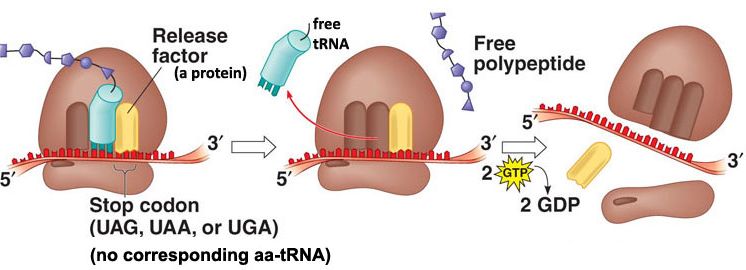How would you describe the steps in protein synthesis?
1 Answer
Proteins are synthesised (made) by the ribosomes using messenger RNA transcribed from DNA in the nucleus.
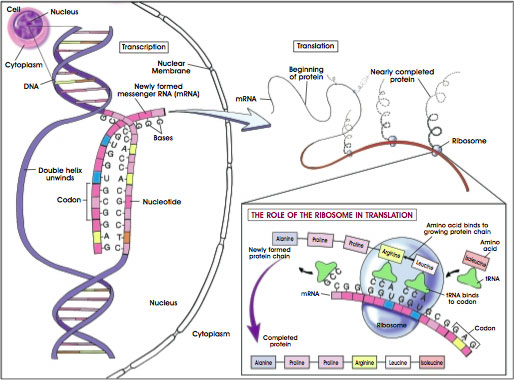
Explanation:
In every eukaryotic cell, such as plants and animals, there is DNA in the nucleus. The nucleus is an area surrounded by a membrane (nuclear membrane) which has some pores for materials to enter and exit, but these are controlled.
The DNA is the cell's instructions, it is a series of code that can be transcribed and translated to make proteins. As in the image below DNA is a series of bases attached to a sugar phosphate backbone and bonded to another base pair to made a ladder, this ladder is twisted making the shaped called a double helix . There are four base pairs: Adenine (A), Thymine (T), Guanine (G), and Cytosine (C).
The bases have bases they bond to making complementary base pairs , A and T bond together while the C and G bond together. on each strand of DNA one end is labelled 5' (read as 5 prime) and other end is the 3'. The 5' end base pairs of one strand are always attached to the 3' end of the complementary strand. Labelling the ends helps us to describe in which direction DNA is read.
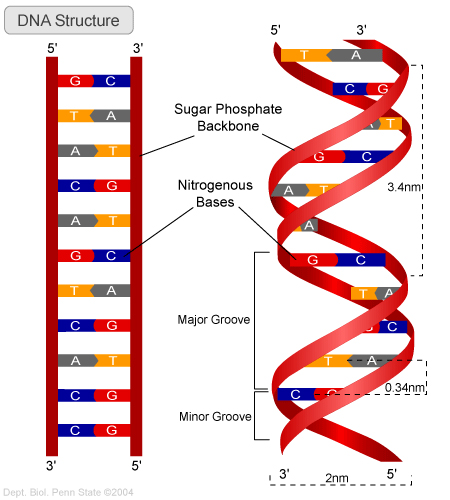
Since the DNA cannot leave the nucleus , copies of the section needed to make the protein are made, this is called transcription.
This done by first opening the double helix with an enzyme called DNA Helicase. Another enzyme called RNA polymerase will match new bases to the original DNA attaching them in a long strand of mRNA. When the enzyme reaches the end the strand will be removed and the DNA can close.
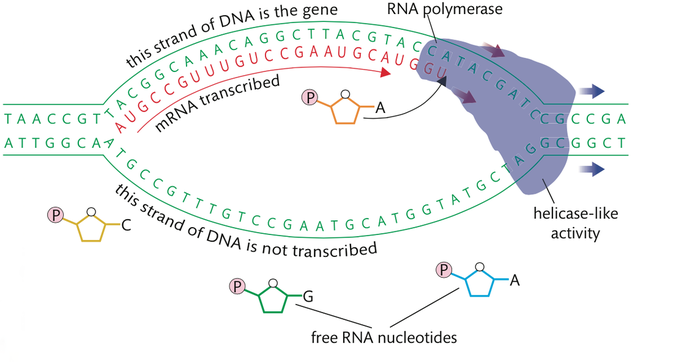
This mRNA strand is not double sided, only one side of the ladder is transcribed and it is not DNA but RNA and is called messenger RNA or mRNA.
mRNA does not use the same base pairs as DNA, one of the bases is different, Thymine in DNA is not used in RNA, instead it uses Uracil (U) which will, like Thymine, bond to Adenine. The mRNA is arranged in codons or groups of three base pairs, each codes for an amino acid which are the building blocks of proteins. Many codons could code for one amino acid.
Once the DNA has been transcribed to produce mRNA, the mRNA can travel out the nuclear membrane into the cytoplasm to find a Ribosome. This is an organelle that synthesises proteins, some are free in the cytoplasm, some are attached to the endoplasmic reticulum , an organelle that folds proteins in the correct shape and delivers it to other areas.
There are three steps to translation: Initiation, Elongation and Termination.
- Initiation:
The ribosome will form around the mRNA strand when a tRNA (transfer RNA) attaches to a codon called the start codon, the most common start codon is AUG.
Transfer RNA are molecules found in the cytoplasm each with their unique codon that bind to complementary codons on mRNA. For example AUG on the mRNA will be bound to a UAC codon on the tRNA. On top of each tRNA is the amino acid that corresponds to that codon.
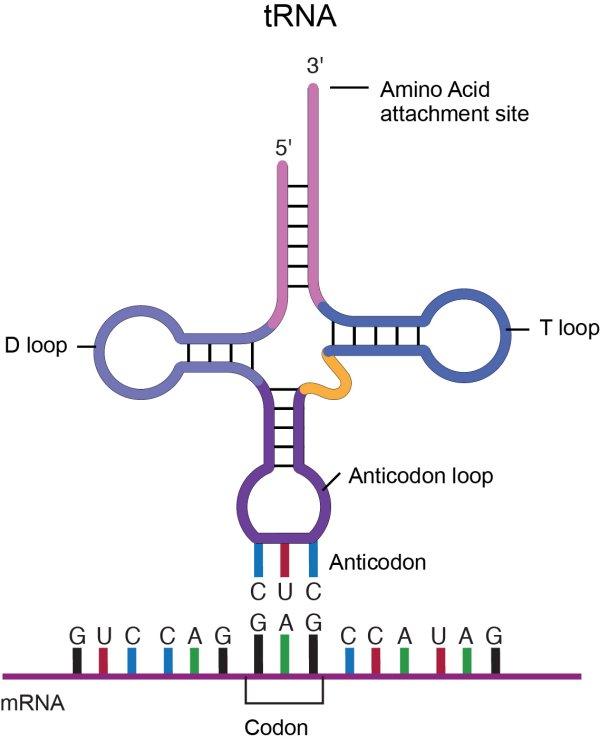
The ribosome is made of two subunits , one is larger, the other smaller. There are three sites where tRNA are found at any one time while the protein is being made.
- Elongation:
Now the ribosome can start making the protein strand. tRNA that matches the mRNA code start to attach along the strand, the ribosome moves along the strand from the 5' end to the 3' end until is find a STOP codon.
As the ribosome moves along the amino acid from the first tRNA is broken off and passed on to bind to the amino acid on the next tRNA using a peptide bond , because of this the chain of amino acids is called a polypeptide chain . The ribosome does this with the help of an enzymes call aminoacyl tRNA synthase .
Watch the animation for further clarification:
Animation of protein synthesis in the ribosome
- Termination:
When the ribosome reached a stop codon, the most common being UAG, UAA, and UGA, it will detach the polypeptide chain and fall off the mRNA.
